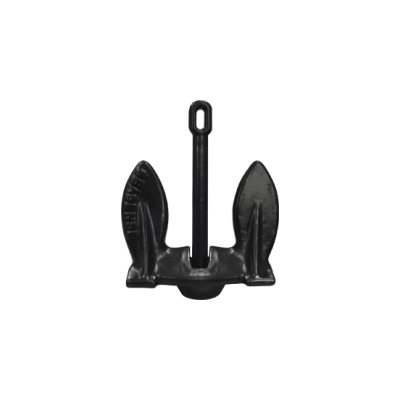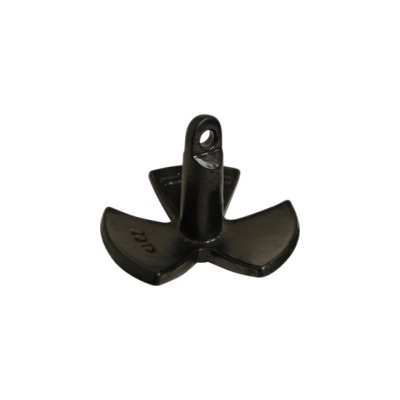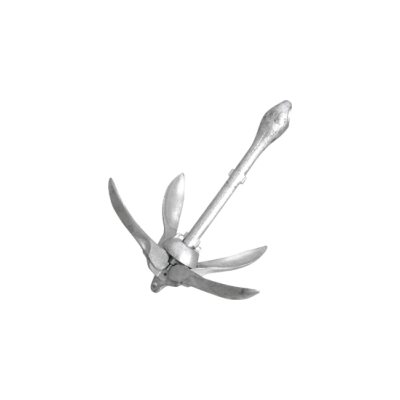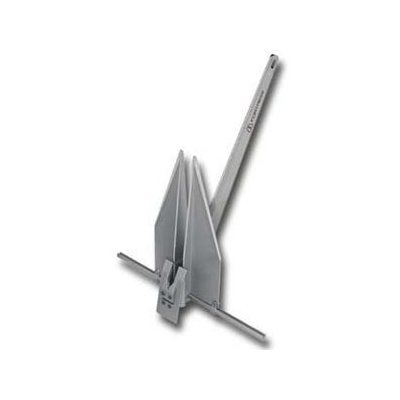-
Products
- Anchors, Ropes and Docking Accessories
- Boat Maintenance
- Cabin, Kitchen, BBQ and Decorations
- Canvas, Covers, Biminis and Carpets
- Dinghy & Canoe Accessories
- Electricity and Lighting
- Electronics
- Equipment for Sailing
- Fishing Products
- Gas Tanks and Fittings
- Hardware and Fasteners
- Ladders & Plateform
- Mechanical Motor Parts and More
- Navigation and Publications
- Plumbing, Toilet and Accessories
- Propellers
- Recreational Vehicle Accessories
- Safety and Rescue Equipment
- Seats, Chairs, Tables, Hardware & Accessories
- Steering Accessories
- Trailers
- Ventilation, Hatches and Accessories
- Watersports
- Winterizing
- Brands
- Promotions
- Our Stores
- Contact Us
- Gift Card
- Promo Code
| ||||||||||||
The anchors Looking for the perfect anchor for your boat? You should familiarize yourself with the basic characteristics of different types of anchors in order to choose the one that best suits your needs. In this edition of Captain's Logbook, we will make an overview of the factors to consider when buying your anchor. These factors must take into account the environmental conditions (weather and type of seabed), the size of your boat and the weight of the anchor. The operation of the anchor The anchor is intended to keep the boat in place away from the waves and rocks, clinging to the seabed. On sandy or muddy seabed, the anchor hollows the surface, creating a suction through the depression and weight thereby providing holding strength. When it comes to hard or rocky bottoms, anchor clings to the salient elements on the seabed.
Features to consider There are many types of anchors but there are nevertheless characteristics common to consider during your research.
The size and weight of the anchor There is an urban legend that the heavier an anchor is, the better it is. The physical size proves it a better indicator of the anchor holding capacity rather than its weight. (Some anchors weighing only 5 pounds can hold over 1000 pounds!) Check anchors sizes offered by the manufacturer of anchors in relation to the size of your boat, the location (type of seabed, stream strength) you dock where you and your habits Navigation: throw your anchor usually for two hours or two weeks, in a lake or the Atlantic Ocean? The last thing you need when bad weather comes, it is inadequate anchor. What materials choose? Three options are available: galvanized steel, stainless steel and lightweight aluminum. Most boaters choose a galvanized anchor for reasons of cost. Several anchor models are available coated with a protective layer of vinyl. This layer will add to the look of your anchor and will fit perfectly with the colors of your boat while protecting it from scratches during assembly. Type anchors The following list shows the anchor of the most popular models currently on the market
The importance of the chain Adding a chain length is essential for the proper functioning of your anchor Here are the main reasons.:
Tip: use two anchors styles For greater anchor security, you should ideally use a second anchor; one of each type: flat anchor and anchor plow. The type of bottom (mud, seaweed, sand, coral or rock) dictates the choice of different anchors, as well as the size and drift of the boat, the wind conditions and the status of water. Some anchoring situations also require the simultaneous use of more than one anchor. You may sometimes need to two anchors at a crowded anchorage, one at the bow and one at the stern of the vessel to limit swing. Two anchors attached to the front at an angle of 60 ° are another good way to improve security against sway and drift, and allow you to shorten the cables and use less space. Face of severe weather conditions, where only one anchor may not be sufficient, the use of a second anchor will prove essential for maintaining the position of the boat. Remember, when the wind speed doubles, the pressure on the boat (and the anchoring system ground) quadruple. In a future edition of Captain's Logbook, we will share with you the best anchoring techniques adapted to different conditions. Terms of Use: This journal is intended for information purposes only The Marine Mart offers the 'Captain’s Logbook' in good faith but can not guarantee or warrant the accuracy of this information in the Journal For questions... a product, a brand or a specific application, always refer to manufacturer's instructions. Copyright: All rights reserved. No reproduction of this message in whole or in part is permitted without written permission of the Marine Warehouse Inc. |







